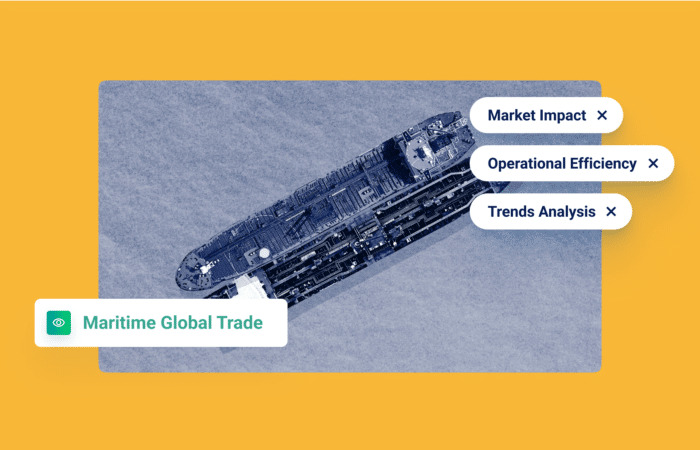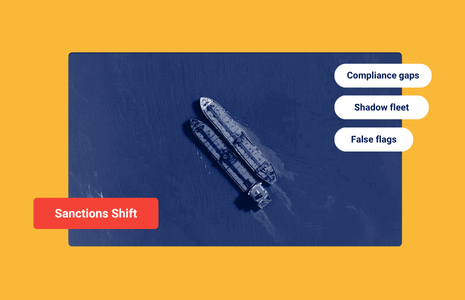Your Ace for the Bunkering Hot Spot Reshuffle

What’s inside?
The Houthis have managed to heavily alter many aspects of the maritime and supply chain ecosystems, and bunkering is no exception. Keep reading to see which two new bunkering hot spots our AI platform has identified…
Many global shipping carriers are diverting their vessels away from the Red Sea and Suez Canal, and instead they are looping around the Cape of Good Hope in South Africa, as we explained a month ago.
A significant number of vessels are choosing to sail around the Cape, which will likely add 10 to 14 days of travel time, and is completely reshuffling bunkering hot spots globally. Vessels now need to fuel in unfamiliar ports/areas. This is an opportunity for bunkering organizations that are fast-moving and possess the technology for:
- Quick lead generation
- Hot spot identification
- Adaptation to changing demands
Trade Flows & Hot Spots Have Changed
Using our recently-released, AI-powered Sequence Search capability, Windward has focused on the number of unique container vessel voyages (completed journeys through the Red Sea) from Bab-el-Mandeb to the Suez Canal:
- The weekly average of unique completed voyages in Q3 was 184
- There was an 18% decrease in Q4
The number of course deviations in the area connecting the Arabian Sea to the Gulf of Aden and the Red Sea has dramatically increased, according to Windward’s AI-powered platform, from an average of 41 between December 2022-September 2023, to 143 in October and 164 in November.
Want the numbers for December and January? Contact us.
Segmentation by classes reveals that the most significant change occurred among cargo and service vessels, with a 336% and 550% increase in the average number of course deviations.
Changing trade flows of course means changing bunkering hot spots…
Windward’s Maritime AI™ platform compared bunkering operations from October 2022-January 2023 vs. October 2023-January 25, 2024.
Two new bunkering hubs have started to form:
- Mauritius – bunkering operations increased by 61%
- Cape Verde – they rose by 206%!
This makes sense, as these are the “before” and “after” spots when circling the Cape of Good Hope. These two hubs actually seemed to replace the former Cape of Good Hope spot, which showed a 84% decrease when comparing the two time periods. Djibouti bunkering operations decreased by 27%, likely due to its proximity to Yemen, but the bunkering operations in the Saudi ports in the Red Sea remained the same.

Windward’s platform recognizes the shifting hot spots using behavioral analytics – we can predict where the next hub will form based on continuous vessel-behavior analysis.
Your Ace in the Hole for Bunkering
Bunkering is challenging even in “normal times” (is there really ever a totally normal time?).
Identifying new business opportunities is difficult, especially considering the significant potential consequences from inadvertently doing business with a sanctioned vessel, and the fact that many bunkering organizations still don’t have effective business intelligence systems.
Also, bunkering companies operate with small margins. It’s an expensive business, reliant on fuel prices.
This means bunkering companies have to maximize new opportunities, such as this route reshuffle. Business intelligence (BI) is an ace in the hole to stay ahead of the competition…
AI-driven insights into the competitive landscape are a vital part of driving business growth, especially during a fluid global crisis. You must be able to:
- Track where potential customers are headed and find the new hot spots before your competitors, to proactively offer crews the services they need
- Define customized queries and automated alerts for new business opportunities before they approach your ports and areas of interest
- Know which locations bunkering companies’ competitors are strong in
An effective business intelligence solution should offer trading patterns monitoring, with quick identification of new bunkering hot spots, as well as strategic decision optimization. This is achieved by analyzing trends in types of volumes of vessels, and locations to and from ports of interest.
Watch Out for the Joker
We talked about the increased traffic around The Cape of Good Hope, but here’s something you should know…
The Cape of Good Hope is a known smuggling route for Russian oil. Unlike the Suez Canal, the Cape does not have check points. Diverting a large number of ships there, rather than the regulated Red Sea, may make smuggling in the Cape even easier and cause an increase in illegal commodity trades.
Bunkering deals can be concluded in fifteen minutes, so organizations cannot reasonably stretch the sales process to an hour to conduct due diligence, without risking a lost opportunity.
This makes it tough for bunker trader compliance analysts to screen the vessel and assess the risk to the company. Manual work increases the time pressure. Personnel must complete their due diligence fast and come up with the bottom line risk in real time to know within minutes if refueling a specific ship is a safe bet, or could land them in trouble, without missing opportunities.
Things have gotten even murkier since the start of Russia’s war. Gray fleets obscure vessel origins and ownership, or switch flags (flag hopping) to appear non-sanctioned. They’re dubbed “gray” because it is difficult to determine legality and sanctions compliance in many cases.
Bunkering companies require Maritime AI™ technology that accurately flags all relevant risky behaviors, without false positives or false negatives, and risk evaluation enhanced by AI.
See the Solution in Action
There’s More…
Monitor trading patterns and integrate data to build your own trade models. Easily identify new bunkering global hot spots through:
- Cargo flows and vessel balance
- Trading anomalies identification
- Movement monitoring to and from ports and areas of interest
Windward can help give you the winning hand!












